Electronic cigarette exposure triggers neutrophil inflammatory responses
- PMID: 27184092
- PMCID: PMC4869345
- DOI: 10.1186/s12931-016-0368-x
Electronic cigarette exposure triggers neutrophil inflammatory responses
Abstract
Background: The use of electronic cigarettes (e-cigs) is increasing and there is widespread perception that e-cigs are safe. E-cigs contain harmful chemicals; more research is needed to evaluate the safety of e-cig use. Our aim was to investigate the effects of e-cigs on the inflammatory response of human neutrophils.
Methods: Neutrophils were exposed to e-cig vapour extract (ECVE) and the expression of CD11b and CD66b was measured by flow cytometry and MMP-9 and CXCL8 by ELISA. We also measured the activity of neutrophil elastase (NE) and MMP-9, along with the activation of inflammatory signalling pathways. Finally we analysed the biochemical composition of ECVE by ultra-high performance liquid chromatography mass spectrometry.
Results: ECVE caused an increase in the expression of CD11b and CD66b, and increased the release of MMP-9 and CXCL8. Furthermore, there was an increase in NE and MMP-9 activity and an increase in p38 MAPK activation. We also identified several harmful chemicals in ECVE, including known carcinogens.
Conclusions: ECVE causes a pro-inflammatory response from human neutrophils. This raises concerns over the safety of e-cig use.
Keywords: COPD; Electronic cigarettes; Inflammation; MMP-9; Neutrophils; Smoking.
Figures

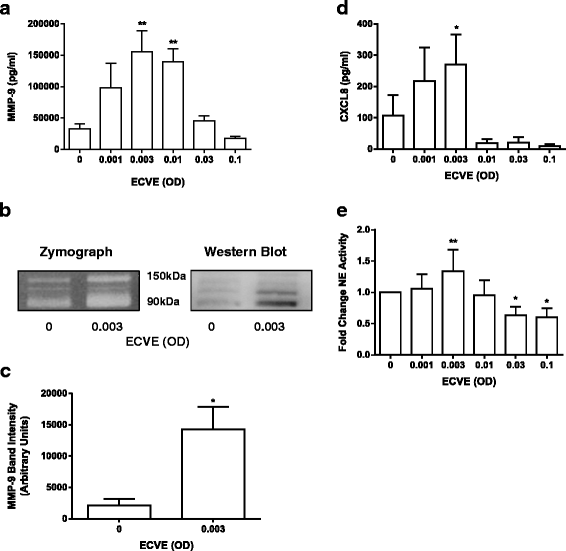
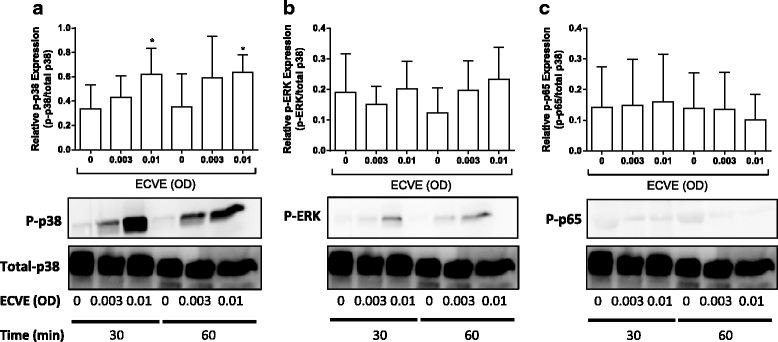
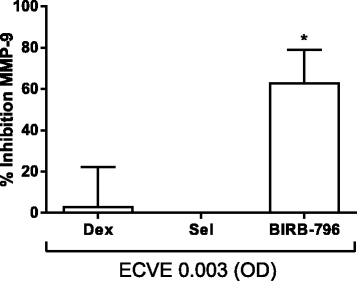

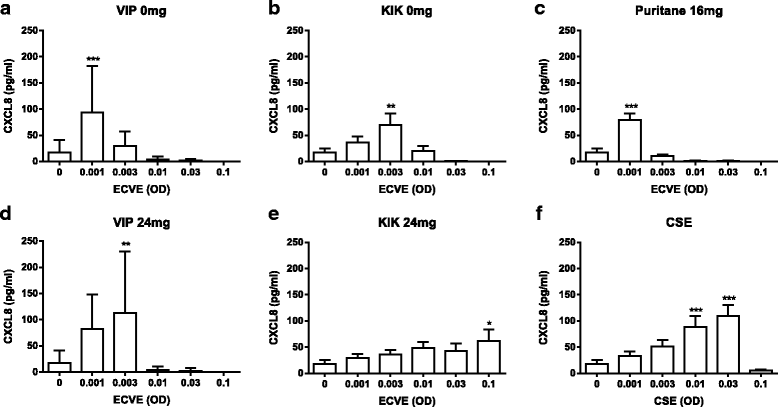
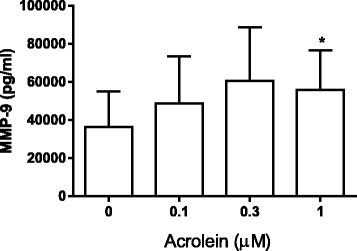
References
-
- Euromonitor International: Vapor devices and e-Cigarettes in the Global Tobacoo Market. 2015. http://blog.euromonitor.com/2015/06/vapor-devices-and-e-cigarettes-in-th.... Accessed 1 Sept 2015.
-
- Summary of results: laboratory analysis of electronic cigarettes conducted By FDA [http://www.fda.gov/NewsEvents/PublicHealthFocus/ucm173146.htm]. Accessed 1 Sept 2015.
-
- Trehy ML, Ye W, Hadwiger ME, Moore TW, Allgire JF, Woodruff JT, Ahadi SS, Black JC, Westenberger BJ. Analysis of electronic cigarette cartridges, refill solutions, and smoke for nicotine and nicotine related impurities. J Liq Chromatogr Relat Technol. 2011;34:1442–1458. doi: 10.1080/10826076.2011.572213. - DOI
MeSH terms
Substances
LinkOut - more resources
Full Text Sources
Other Literature Sources
Medical
Research Materials
Miscellaneous

